Nature Journaling with Kids
I recently taught a series of nature journaling workshops to a group of 3rd, 4th, and 5th graders in Seattle. As springtime is in full gear with summer on the way, I thought I’d share some of my favorite techniques and resources for nature journaling, particularly with kids!
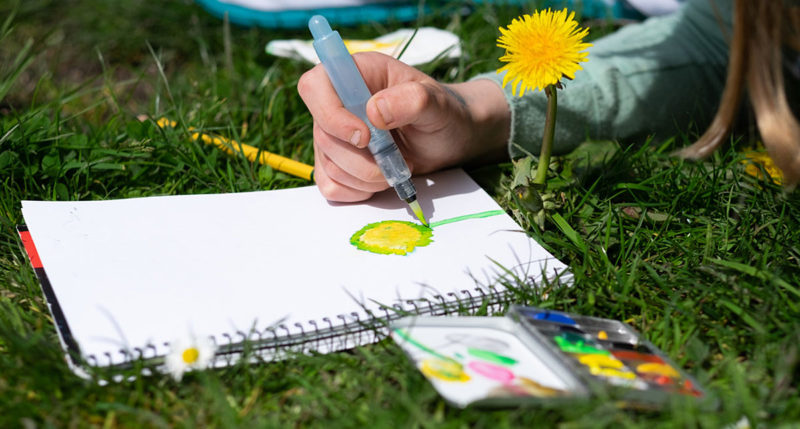
Materials
Supplies with nature journaling start as simple as a sketchbook and pencil. I like a medium size, such as 8.5″ x 5.5″ that is easy and lightweight to carry in a bag. If you plan on adding watercolor to a page, I recommend using at least 90lb paper such as this Canson Mixed Media. The Educational Sketchbook Program is also a fantastic resource for purchasing bulk sketchbooks, I prefer their advanced paper. Additional materials include a sharpener with a built in shavings-catcher (I like the Kum Long Point Sharpener
, but anything simple works), a waterbrush (Pentel Aquash are my favorite, which I include in Art Toolkits), and a color option. The Pentel 12-watercolor set
is lovely student set of paints that pairs well with the Pocket Palette, other options are watercolor pencils and a watercolor crayon set
. Other fun extras include a ruler, magnifier, and binoculars, though it’s less about what tools you have, than about making time to use the ones you have! A small pouch to keep everything together is helpful, even if you just start with a ziplock bag.
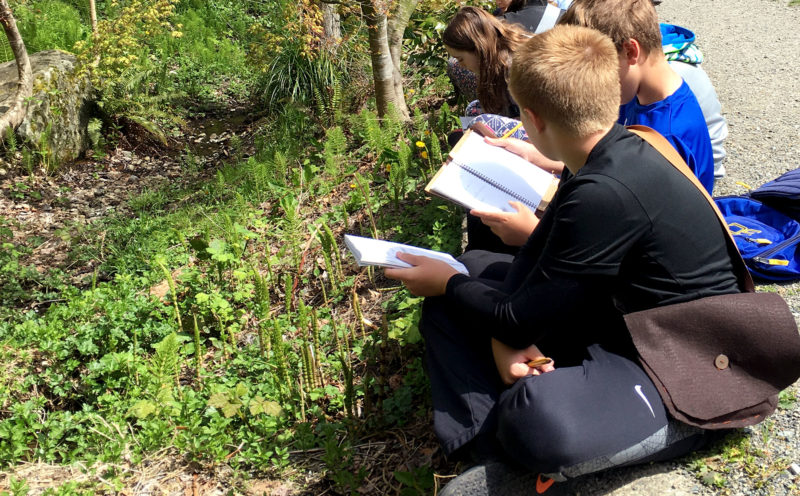
Getting Started
With all of my students (of all ages), I emphasize art as a tool, a tool for exploration, self-expression, and scientific observation. A useful mantra is practice not perfection. If I am out with toddlers, we just delight in sitting next to each other, sketching and talking about what we notice. With elementary kids, I encourage them to squint their eyes to see big shapes, and experiment with using light whisper lines in their sketchbook, and not worrying about erasing. It can also be helpful to make a small viewfinder box with your hands to help choose your composition. Keep it simple when adding color, I like to think of the drawing as the bones of the sketch, and color enlivens it. Remember, practice not perfection! Here are some blog posts outlining other warm-ups and techniques:

Exploring Outside
One joy of sketching as a group is that everyone has a unique perspective of the environment. I encourage showing and telling, adding notes to sketches, and trying to fill a sketchbook page. As one teacher told me once, “they say a picture is worth 1,000 words, but it helps to write some of them down.” Completing the following sentences is helpful:
- I notice…
- I wonder…
- It reminds me of…
As a first activity, I often ask students to reflect on their “Sense of Place,” noting and sketching one more observation per sense (taste can be creative for sure). For touch, I ask them to not only think about what they literally feel, but also how they feel, such as comparing how they feel outdoors verses in a classroom. Another favorite activity of mine is giving students an art scavenger hunt, or prompts for independent exploration. This might including finding a critter and making a series of small quick gesture sketches. Another favorite of mine is creating a plant diagram study, focusing on the details while adding notes and measurements. Particularly with younger students, I find timers are useful to encourage focusing quietly (i.e. we’re going to take the next 3min for a completely silent exploration… ready, set, go!”)
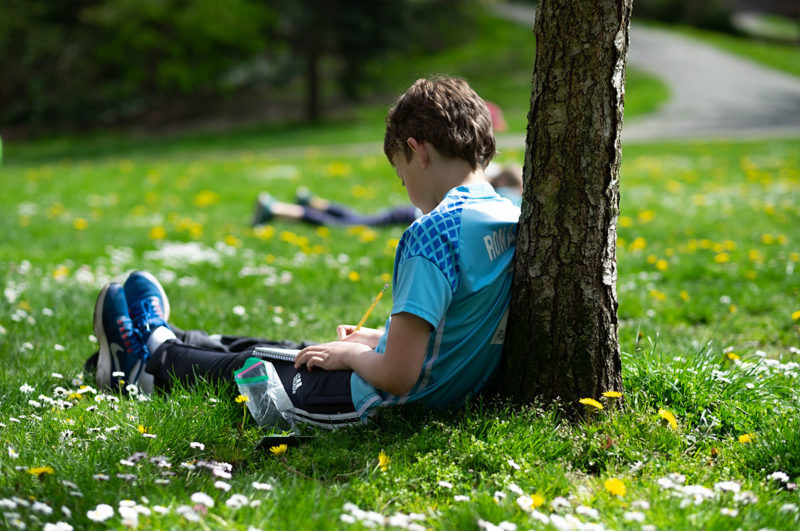
Sharing and Feedback
Journals and sketchbooks are very personal and we can all feel understandably protective and even shy about sharing our work. When I approach anyone journaling, I typically sit down beside them, follow their gaze (instead of peering at their sketchbook), and simply ask, “What are you noticing?” This opens a door for conversation and my students often surprise me with the number of details and patterns they have discovered around them. They then usually hold up their sketchbook to share with me and I tailor my feedback on their application of the tools we’ve practiced. I avoid comments of beauty and focus on their observations, notes, and questions. Students show their enjoyment for the process through their focus and comments such as, “this is fun!”
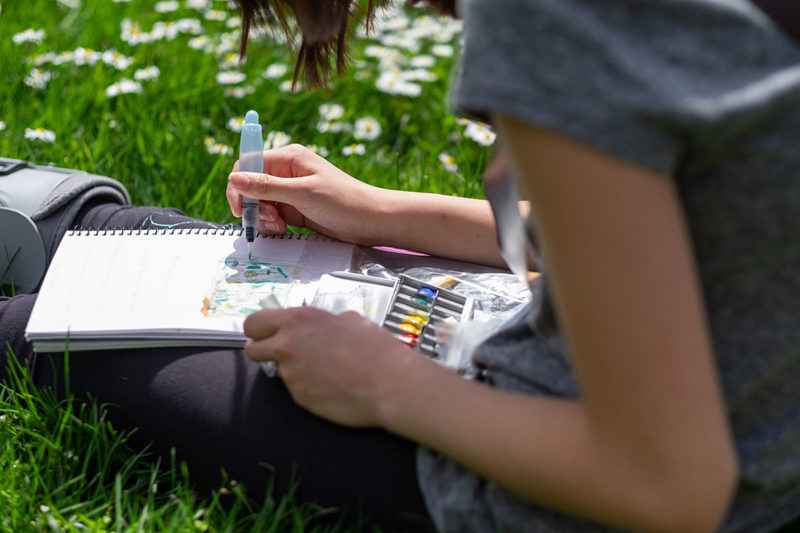
Resources
John Muir Laws has some fantastic nature journaling resources and has also written my favorite book on the subject, The Laws Guide to Nature Drawing and Journaling. Other favorite books of mine include:
- Keeping a Nature Journal
by Claire Leslie Walker
- The Complete Watercolorist’s Essential Notebook
by Gordon MacKenzie
- The Sibley Guide to Birds
by David Allen Sibley
- The Sibley Guide to Trees
by David Allen Sibley
- Wildlife of the Pacific Northwest: Tracking and Identifying Mammals, Birds, Reptiles, Amphibians, and Invertebrates
by David Moskowitz
- Fylling’s Illustrated Guide to Pacific Coast Tide Pools
by Marni Fylling
- Curious Kids Nature Guide: Explore the Amazing Outdoors of the Pacific Northwest
by Fiona Cohen
- Camp Out!: The Ultimate Kids’ Guide
by Lynn Brunelle
Above all, remember that art is a tool, a tool to get out and explore, express yourself, and ask questions about the world. Experiment with your sketchbooks and have fun!
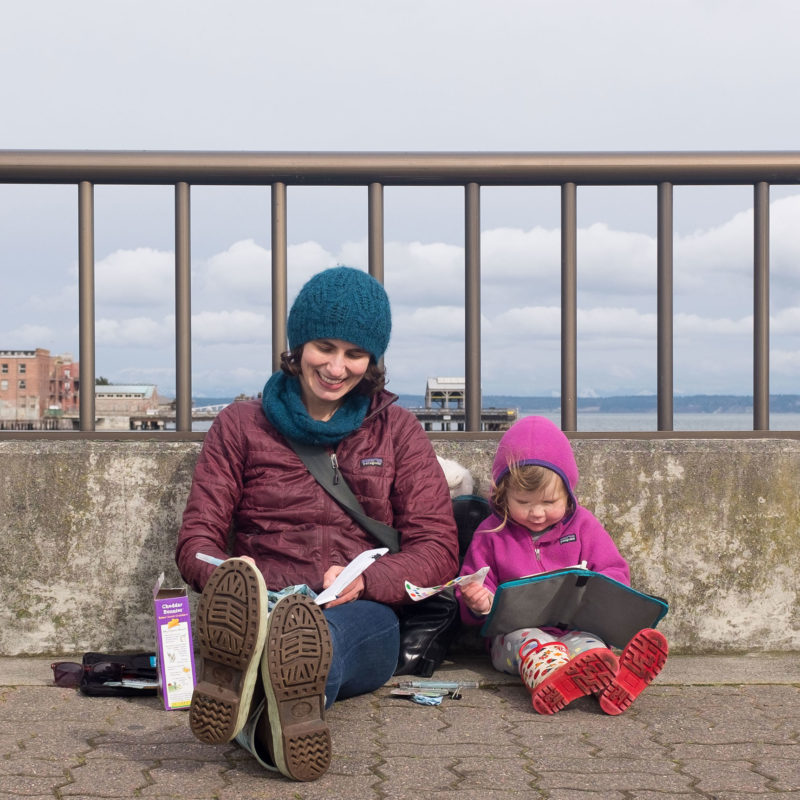
The Amazon links in this post help support my art through their affiliate program.
Leave a Reply